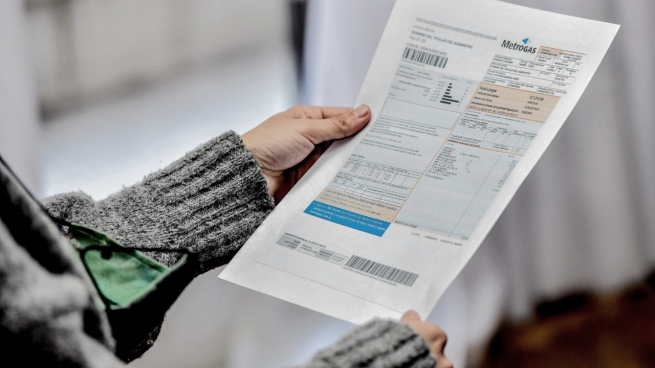The beginning of the process of segmentation of public service rates, aiming at a reduction in subsidies that brings them closer to levels compatible with operating costs, could be a “starting point” for saving electricity and natural gas, with the axis in both main residential consumptionhow are they air conditioning and hot water (DHW).
This was expressed to Télam by Diego Moreno, associate researcher of the Economic Development program of the Center for the Implementation of Public Policies for Equity and Growth (Cippec), and Manuel Pérez Larraburu, head of Product in Energy and responsible for Business Development of the signature BGH Eco Smart.
“Usually there is little awareness of the population regarding the need to save energy and when gas and electricity services are too cheap, there is less propensity to care; therefore, segmentation generates a context that can be taken as a starting point,” Romano said.
Pérez Larraburu agreed that the new rate charts “Conceptually they are going to help, because as the final bills are going to be higher, more preponderance is going to be given” to energy carea trend that has been promoted for years in the countries of the European Union and the United States, for reasons that go beyond the strictly financial to encompass the preservation of the planet, in the face of the threats of climate change.
However, he pointed out that the measure may be half way through since “in no case were all the subsidies removed and the bills are still cheap compared to other countries, where energy is up to four times more expensive.”
This gap between the final rate and operating costs makes it difficult to replace very old appliances with others with technologies that favor lower consumption.
The idea is shared by Pérez Larraburu, for whom “not in all cases there will be a short repayment” that makes it clear to the user the convenience of replacing household appliances with lower consumption appliances.
But beyond the repayment terms, he detailed the main electricity and gas consumption in an average home, valuable information for users to design their savings strategies:
In this sense, he indicated that air conditioning can represent 70% of the consumption of a homeTherefore, the installation of state-of-the-art equipment with devices that help reduce consumption “has a much greater impact than changing the lighting or installing home automation (automation),” he pointed out.
Domestic hot water (DHW), whether gas or electric -depending on the availability of services in each region or in modern buildings that do not have a gas network-, represents 20% of total consumption.
The other artifacts explain the remaining 10% and, despite the general belief, “lighting and the refrigerator are not the main average consumption of a house,” said Pérez Larraburu.
However, he set his sights on the so-called “vampire consumption”, alluding to devices connected at rest or “stand by” which, although they do not represent the main component of total energy expenditure, by leaving them on for hours in which they do not are used represent an unnecessary expense that can be decisive in some households with monthly consumption levels that oscillate the limit of 400 kWh subject to subsidies.
“An example is the router, which is not one of the main consumptions, but many families leave it on 24 hours a day, even when it is not used,” he said.
The savings are not limited to the rational use of electrical appliances and also include construction materials and even the orientation of the houses.
In this regard, the global trend of construction efficiency certification, with parameters similar to those applied to household appliances, is spreading and “in some countries of the European Union, it is mandatory in real estate notices to provide this information,” Moreno pointed out.
With regard to Argentina, the energy efficiency of a home is classified from “A”, which indicates the highest level, to “G”, which certifies the lowest coefficient.


















